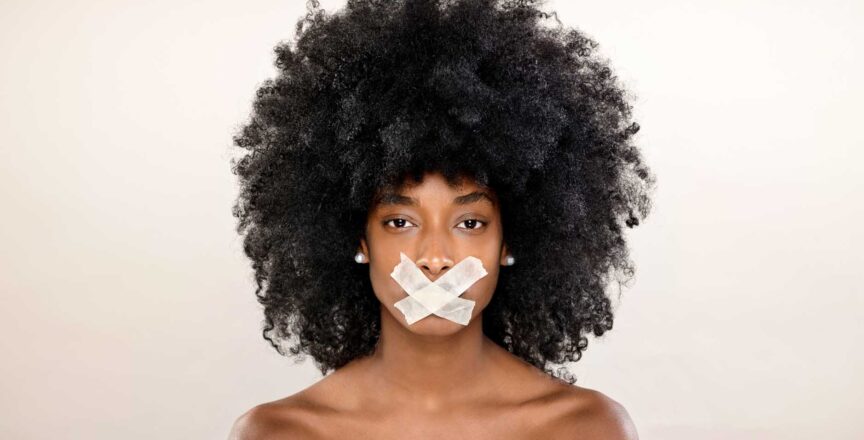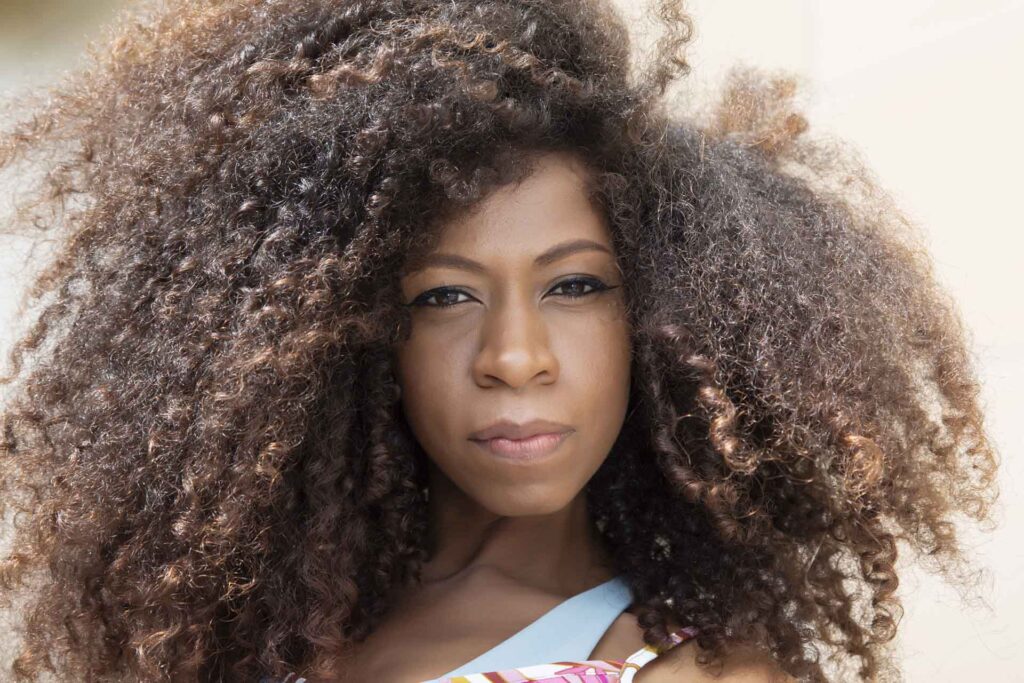
Welcome to our exploration of hair discrimination, a complex issue affecting black women in workplaces worldwide. We’ll delve into its societal context, legal protections, and provide insights for creating more inclusive environments.

Understanding Hair Discrimination
Hair discrimination, while it might sound like a bizarre concept to some, is a very real and pervasive issue. It’s like being judged for your eye color or the shape of your nose – except it’s about your hair.
What is Hair Discrimination?
Hair discrimination involves unfair treatment of individuals based on their hair texture or style. It’s a form of social injustice that often targets black women, who face criticism and bias for wearing their natural, Afro-textured hair.
Imagine being told that your natural hair is “unprofessional” or “distracting”.
Or being denied a job opportunity because your hair doesn’t fit the company’s “image”. Sounds absurd, right? But it’s a reality for many black women.
The Curly Case of Bias
The bias often stems from societal perceptions that associate natural, Afro-textured hair with negative stereotypes.
This bias can manifest in various ways, from microaggressions like inappropriate comments or stares to more overt forms of discrimination like workplace policies that prohibit certain hairstyles.
For example, consider protective hairstyles such as braids, locs, and twists.
These styles are not just fashion statements; they’re deeply rooted in black culture and history and serve practical purposes like protecting the hair from damage.
Yet, these hairstyles are often deemed “unprofessional” in many workplace settings.
A Hairy Situation: The Statistics
To give you an idea of the magnitude of this issue, consider this: according to a study by Dove, black women are 1.5 times more likely to have reported being sent home from work because of their hair.
Furthermore, they’re also 80% more likely to change their natural hair to meet social norms or expectations at work.
| Black Women | General Population | |
|---|---|---|
| Sent home from work because of their hair | 1.5x more likely | – |
| Change their natural hair to meet social norms or expectations at work | 80% more likely | – |
These statistics highlight the urgent need for change. In the next sections, we’ll delve deeper into the societal and historical context of hair discrimination and discuss how we can address this issue.
The Historical and Societal Context of Hair Discrimination
Understanding hair discrimination requires a look back at history and a deep dive into societal perceptions. So, let’s take a trip down memory lane, shall we?
A Tangled History
Hair discrimination against black women has roots in slavery and colonialism.
During these times, Eurocentric standards of beauty were imposed, and Afro-textured hair was often deemed “inferior” or “unattractive”. This historical bias has trickled down through generations and continues to influence societal perceptions today.
Society’s Hair-raising Standards
In many societies, straight hair is often associated with professionalism, beauty, and sophistication, while Afro-textured hair is unfairly linked with negative stereotypes.
This bias isn’t just prevalent in the workplace; it’s reflected in media portrayals, beauty standards, and even in the aisles of your local supermarket where hair products for Afro-textured hair are often labeled as “ethnic” or “alternative”.
The Media Mane-stream
Media plays a significant role in shaping societal perceptions. Unfortunately, the representation of black women and their natural hair in media has often been problematic.
From caricatures in cartoons to limited representation in mainstream media, the message sent is that natural, Afro-textured hair is not the “norm”.
However, things are slowly changing. More and more black women are embracing their natural hair and challenging societal norms. Movements like the Natural Hair Movement are encouraging black women to reject chemical straighteners and embrace their natural hair texture.
In the next section, we’ll delve into a lesser-known but equally important aspect of hair discrimination: texturism.
Texturism: An Underlying Issue
Just when you thought hair discrimination was a handful, here comes another twist in the tale: texturism.
What is Texturism?
Texturism is a form of discrimination where individuals are judged based on their hair texture. It’s like hair discrimination’s less famous but equally troublesome sibling.
While hair discrimination broadly involves bias against certain hairstyles, texturism specifically targets the natural texture of Afro-textured hair.
The Root of the Issue
Texturism often favors hair textures that align with Eurocentic standards of beauty. In other words, straight hair is often deemed “good hair”, while coily, kinky or tightly-curled hair is viewed negatively. This bias can be seen in various aspects of life, from media portrayals to workplace expectations.
Texturism in the Workplace
In the workplace, texturism can manifest in many ways. For instance, a black woman with naturally kinky hair may be passed over for a promotion in favor of a colleague with straighter hair, under the pretext of the latter having a more “professional” appearance.
The Impact of Texturism
The impact of texturism goes beyond the workplace. It can affect an individual’s self-esteem and mental health, and contribute to a culture that devalues natural black beauty.
But fear not! The fight against texturism is on. Movements like the Natural Hair Movement are not just challenging societal norms around hairstyles, but also promoting acceptance and appreciation of all hair textures.
In the next section, we’ll discuss how legal protections like the CROWN Act are helping to combat hair discrimination and texturism.
The Legal Landscape: The CROWN Act and Beyond
In the face of hair discrimination and texturism, legal protections have emerged as a beacon of hope. One such protection is the CROWN Act.
The CROWN Act: A Royal Decree Against Hair Discrimination
The CROWN (Creating a Respectful and Open World for Natural Hair) Act is a law that prohibits race-based hair discrimination. It’s like a royal decree that says, “Your natural hair is beautiful, and you have the right to wear it proudly.”
The CROWN Act was first passed in California in 2019, and since then, several other states have followed suit.
This law protects individuals in workplaces and K-12 public schools from discrimination based on their natural hair or hairstyles associated with their race.
Beyond the CROWN Act: Other Legal Protections
While the CROWN Act is a significant step forward, it’s not the only legal protection against hair discrimination. Other laws, such as Title VII of the Civil Rights Act of 1964 in the U.S., can also be used to fight hair discrimination in certain cases.
However, these laws often require the victim to prove that the discrimination they faced was racially motivated, which can be a challenging task.
The Road Ahead: The Need for More Legal Protections
While existing legal protections provide some recourse against hair discrimination, there’s still a long way to go. The CROWN Act is yet to be passed in all states, and even where it has been passed, enforcement can be a challenge.
Moreover, legal protections need to extend beyond just workplaces and schools. Hair discrimination can occur in various other settings, such as housing and public accommodations.
The Impact of Hair Discrimination in the Workplace
Hair discrimination in the workplace is more than just a bad hair day. It’s a systemic issue that affects black women’s professional experiences and opportunities.
The Professional Cost of Natural Hair
Black women often face a professional “tax” for wearing their natural hair.
This “tax” can come in various forms, from microaggressions like inappropriate comments or stares to more overt forms of discrimination like being passed over for promotions or even losing job opportunities.
For instance, consider the case of a black woman who was denied a job because her dreadlocks were deemed “unprofessional”.
Or the case of a black employee who was told to straighten her hair if she wanted to climb the corporate ladder. These are not isolated incidents but examples of a widespread issue.
The Emotional Toll of Hair Discrimination
The impact of hair discrimination isn’t just professional; it’s personal too. Dealing with hair discrimination can take an emotional toll on black women, affecting their self-esteem and mental health.
Imagine having to constantly worry about how your natural hair is perceived at work. Or feeling the need to alter your natural hair texture to fit in. This constant pressure can lead to stress, anxiety, and even depression.
The Power of Representation
On a positive note, more and more black women are challenging these biases and proudly wearing their natural hair at work. Their courage is not just inspiring other black women but also challenging societal norms and perceptions.
Addressing Hair Discrimination: Steps for Employers
Creating a workplace that’s free from hair discrimination is not just about complying with laws; it’s about fostering a culture of inclusivity and respect. So, how can employers address hair discrimination?
Step 1: Understand the Issue
The first step in addressing hair discrimination is understanding the issue. This involves educating oneself about the historical and societal context of hair discrimination and texturism.
It’s like doing your homework before a big test. The more you understand the issue, the better equipped you’ll be to address it.
Step 2: Review Workplace Policies
Next, review your workplace policies. Do they inadvertently promote hair discrimination? For instance, does your dress code policy prohibit certain hairstyles? If yes, it’s time for a policy makeover.
Step 3: Provide Diversity Training
Provide diversity and inclusion training to your employees. This can help them understand the nuances of hair discrimination and promote a culture of respect and acceptance. Remember, change starts from within.
Step 4: Encourage Open Conversations
Create a safe space for open conversations about hair discrimination. Encourage your employees to share their experiences and suggestions. It’s like having a family discussion at the dinner table – everyone gets a chance to speak and be heard.
Step 5: Celebrate Diversity
Last but not least, celebrate diversity! Whether it’s through company events or internal communications, celebrating diversity can help foster a sense of belonging among your employees.
In conclusion, addressing hair discrimination is not just the responsibility of black women who are affected by it; it’s a collective responsibility that we all share.
Hair Discrimination: Moving Forward Together
As we untangle the complex issue of hair discrimination, it’s clear that this is not just a black women’s issue; it’s a human issue. It’s about acknowledging and respecting the diversity that makes us who we are.
The Power of Awareness
Awareness is a powerful tool in combating hair discrimination. By understanding the historical and societal context of this issue, we can challenge our biases and change our perceptions. It’s like switching on a light in a dark room – suddenly, everything becomes clear.
The Role of Legal Protections
Legal protections like the CROWN Act play a crucial role in addressing hair discrimination. However, laws are just one piece of the puzzle. Real change requires a shift in societal attitudes and perceptions.
The Importance of Inclusive Workplaces
Inclusive workplaces are not just good for employees; they’re good for business too. A diverse and inclusive workplace fosters creativity, innovation, and employee satisfaction. So, let’s embrace diversity in all its forms – including hair diversity!
The Journey Ahead
The journey to a world free from hair discrimination is a long one, but every step counts.
Whether you’re a black woman standing up against hair discrimination, an employer striving to create an inclusive workplace, or simply someone learning about this issue – your efforts matter.
So, let’s move forward together on this journey. Let’s continue to learn, grow, and work towards a world where everyone is free to be their authentic selves – Afro-textured hair and all!
And remember, whether your hair is straight or curly, long or short, dyed or natural – it’s beautiful just the way it is.
Frequently Asked Questions
Q: What is hair discrimination? A: Hair discrimination involves unfair treatment of individuals based on their hair texture or style. It often targets black women, who face criticism and bias for wearing their natural hair.
Q: How does hair discrimination affect black women in the workplace? A: Hair discrimination can lead to black women being passed over for promotions, receiving inappropriate comments, or even losing job opportunities. It can also take an emotional toll, affecting their self-esteem and mental health.
Q: What is the CROWN Act and how does it protect against hair discrimination? A: The CROWN Act is a law that prohibits race-based hair discrimination. It protects individuals in workplaces and K-12 public schools from discrimination based on their natural hair or hairstyles associated with their race.
Q: What is texturism and how does it relate to hair discrimination? A: Texturism is a form of discrimination where individuals are judged based on their hair texture. It specifically targets the natural texture of Afro-textured hair and often favors hair textures that align with Eurocentic standards of beauty.
Q: How can workplaces create more inclusive policies to prevent hair discrimination? A: Workplaces can address hair discrimination by educating themselves about the issue, reviewing their workplace policies, providing diversity training, encouraging open conversations about hair discrimination, and celebrating diversity.
Q: Are there other forms of legal protection against hair discrimination? A: Yes, other laws such as Title VII of the Civil Rights Act of 1964 in the U.S. can also be used to fight hair discrimination in certain cases.
Q: How prevalent is hair discrimination? A: Hair discrimination is a widespread issue. According to a study by Dove, black women are 1.5 times more likely to have reported being sent home from work because of their hair.
Last modified: October 16, 2023



